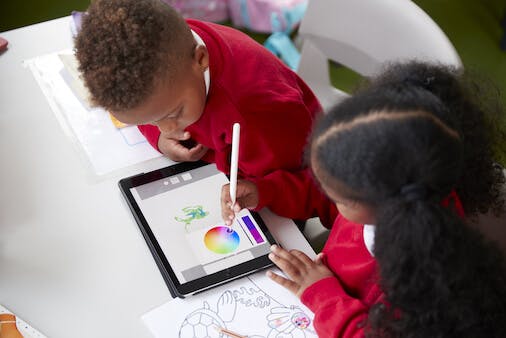Screen Time in the Age of Quarantine

Not All Screen Time is Created Equal
Screen time can be divided into four subcategories: passive, interactive, creative and communication.
Passive screen time includes entertainment where the viewer isn’t doing much more than watching the screen, such as “vegging out” in front of a movie or TV show. The interactive category covers a slightly higher level of participation, encompassing game play, viewing tutorials and things that are more educationally-based.
The categories of creativity and communication require a higher level of attention and interaction. Creative screen time is comprised of projects such as writing, making movies or editing photos, or even using drawing programs.
Finally, communication is exactly that, interacting with family and friends. This category might be the most important right now, given the dispatch to shelter in place. Everyone is feeling the distance from loved ones right now, and it’s vital to maintain communication with all friends and family members, especially those who may live alone or in compromising circumstances. Teenagers, especially, are in need of social activity. They are biologically wired to engage outside of the family, and may take social distancing especially hard.
The Numbers Game
Under normal circumstances, one hour each, per day, of passive and interactive screen time is considered the maximum amount that is appropriate for children. During quarantine, it may be okay to double that. It’s important to clearly communicate to children that increased screen time is directly correlated to the need to stay at home.
Time spent in creative pursuits or communicating with friends and family should only be restricted if they’re getting in the way of things such as homework or chores, regardless of the state of quarantine. Creative pursuits engage the mind in a myriad of ways, encouraging critical thinking and problem-solving. Beyond that, communication is simply a natural part of being human. We need connection in order to be happy and survive. This is not only a sentiment; people who are isolated alone, for long periods of time, have many more health problems than those who live with other people.
So let your children create and communicate freely, and let them watch shows and play games, within reason. It may make being cooped up at home a little more enjoyable for kids and parents alike.
You’ll find more quarantine related content on our COVID Center.


